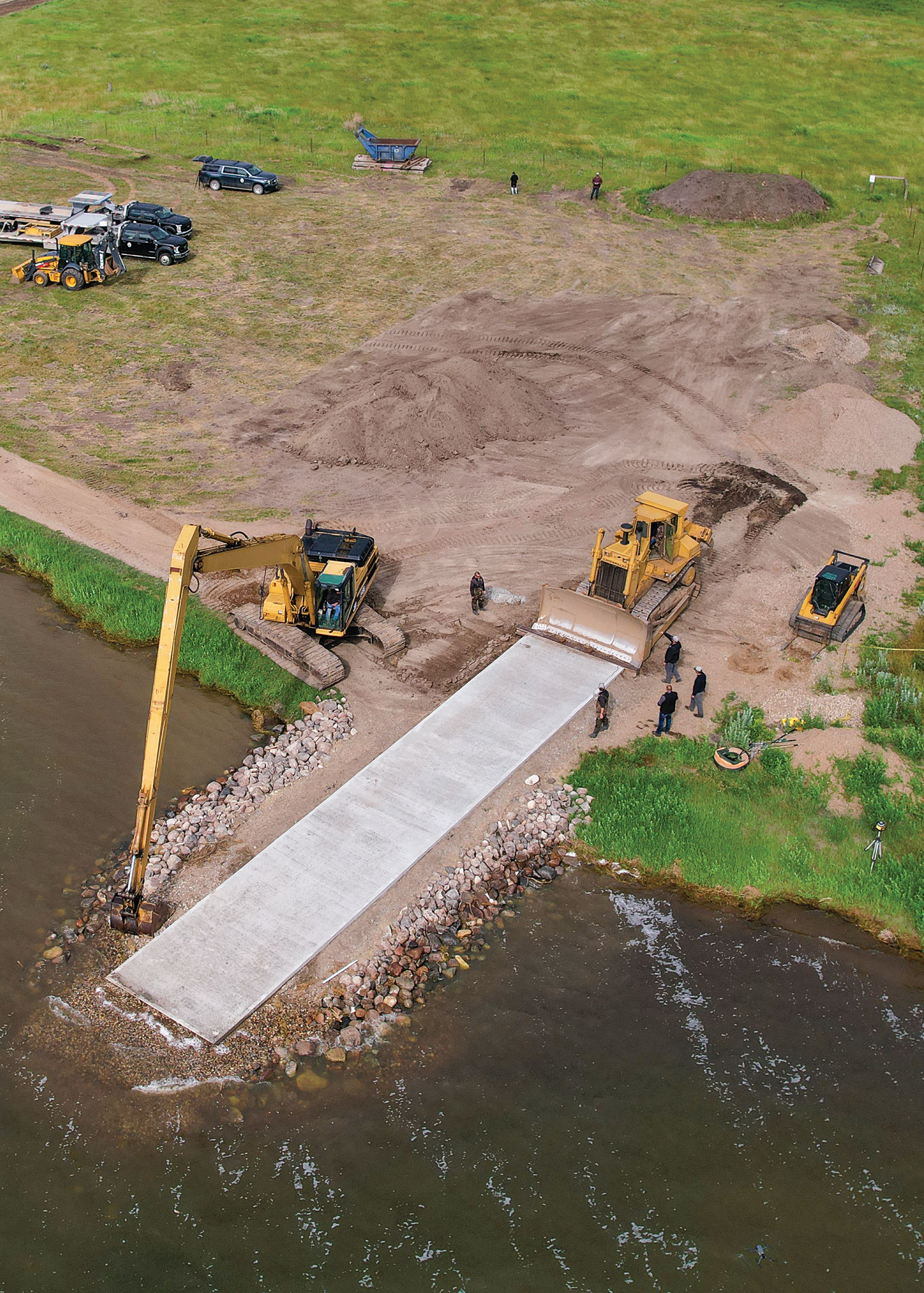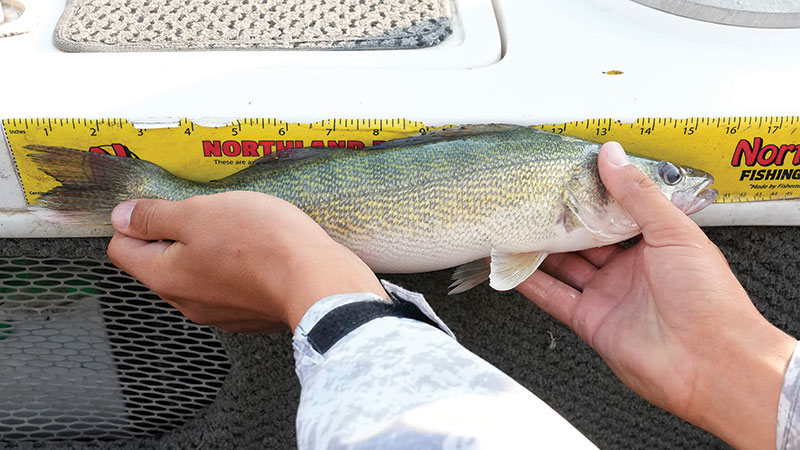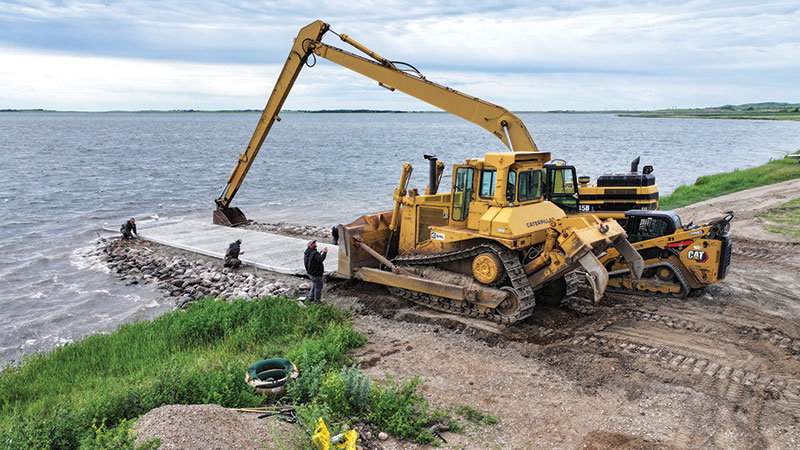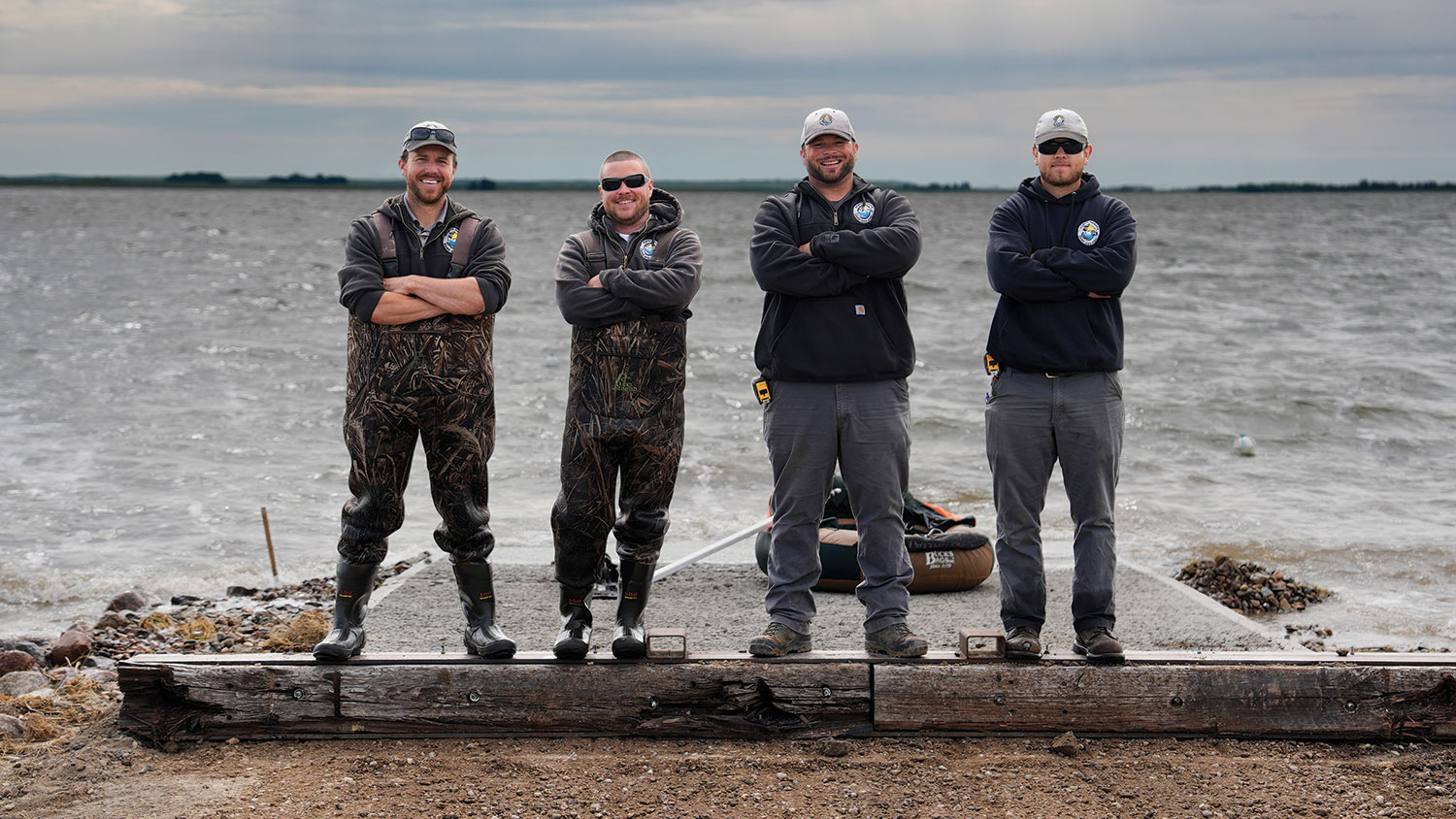Revamp of Horsehead’s Ramp
Ron Wilson

Boating access to Horsehead Lake in Kidder County, the state’s third largest natural lake and go-to walleye fishing destination, was improved earlier this summer to the delight of anglers.
“Horsehead Lake has really taken off over the past few years.
Historically it’s been more of a pike fishery, but in the last five to six years it’s been stocked with walleye, and they’ve really taken off and they’re at a really good catchable size right now and it’s a hot spot that everybody wants to get in to,” said Wes Erdle, North Dakota Game and Fish Department fisheries development project supervisor.
“So, improving access to Horsehead Lake was just one of our priorities this year.”
Erdle and the Department’s fisheries development crew constructed a new concrete push-style ramp on the lake’s west shore and built a peninsula in deeper water to combat siltation issues experienced the last few years.
“Horsehead Lake is kind of shaped like a soup bowl where the shorelines are really flat, and you have to get out quite a ways to get to some deeper water.
Initially, we installed a slide-in steel ramp here, and that just helps us chase the water levels as it rises and recedes … we can push and pull that ramp in and out,” he said.
“Another aspect of Horsehead Lake is the substrate is really sandy, and with the lake being so large and there being a lot of fetch whenever we get a high wind event, that substrate just kind of rolls along the shoreline causing a lot of maintenance issues with siltation on this ramp.
So, the decision was made to build a peninsula out away from the shoreline, and then actually upgrade the ramp from the slide-in to a poured concrete ramp.
And this should alleviate a lot of our siltation problems going forward.”

Walleye from Horsehead Lake
They also upgraded the ramp’s entrance road, which was just a dirt two-track through the section line.
The new road now has shoulders, gravel and a ditch, making access to and from the ramp much easier.
“The parcel that we’re standing on right now is owned by the State Land Department.
We got a 25-year easement with them to build this site to provide access,” Erdle said.
“If something should happen to this lake, let’s say we go into a drought and the water recedes way back and we lose the fishery, we would come back in at that point and reclaim the area for them.”
Improving access at Horsehead Lake, a four- to five-week project, isn’t the only ramp project on the Department’s to-do list this summer.
“The first is identifying a fishery that’s sustainable over time, and that justifies the cost associated with boating access.”
Once that’s established, they need to find a site on that lake with the proper slope into the water, about 11 to 15%, plus available land that allows for nearby parking.
“Also, a major factor is the proximity to a road.
Roads are very expensive to construct, so we try to keep them as close as we can to existing roads,” Erdle said.
“The next thing is securing an easement for that parcel of land.
And since North Dakota is 93% privately owned, this can be the most difficult part.
“So, you might have a great site with great slope topography, with a bunch of parking right next to a township road, but the landowner just isn’t willing to work with you,” he added.
“On the other hand, you might have a landowner who’s willing to bend over backwards for you, accommodate you in any way possible, but we just don’t have the depth or maybe the existing road is a couple miles away ... there are a number of things that need to fall into place.”
Following that, Erdle said the Department must secure permits from the U.S. Army Corps of Engineers, State Water Commission, and clearance from the State Historical Society.
“Once those are all in place, then it’s finding a local entity to take care of the operation and maintenance of the facility after the initial construction phase.
This is probably one of the most important parts.
We rely on these local entities very heavily, whether it be a wildlife club, maybe a city park board, a county park board, water resource district, or maybe even just a local farmer or rancher,” Erdle said.
“These entities are the backbone of our boating access program, and without them, we would not be able to put all of these facilities on the landscape.”


